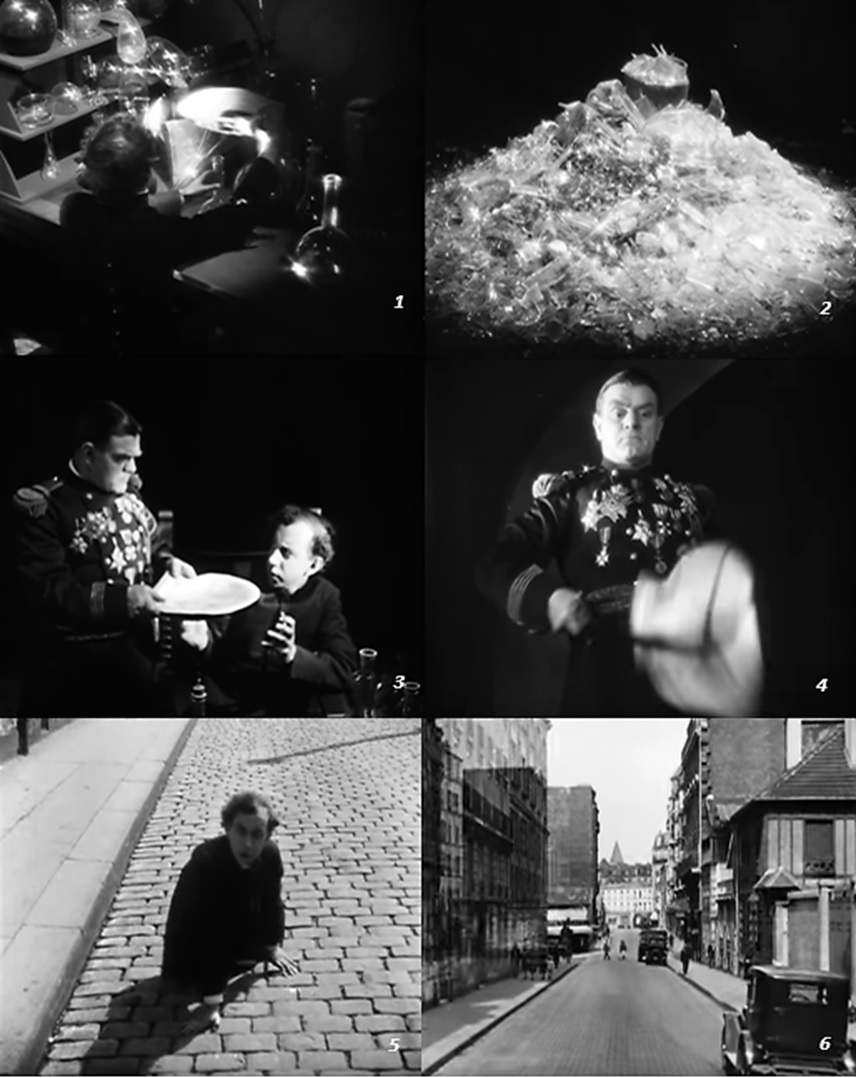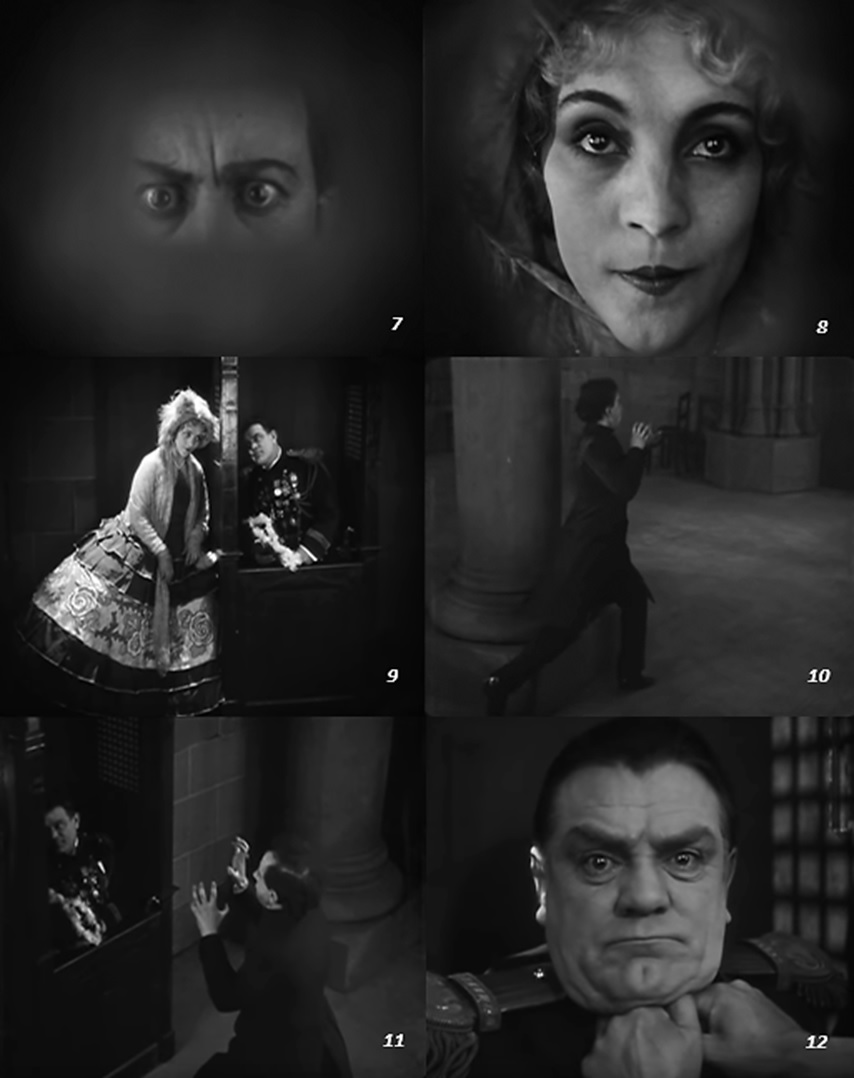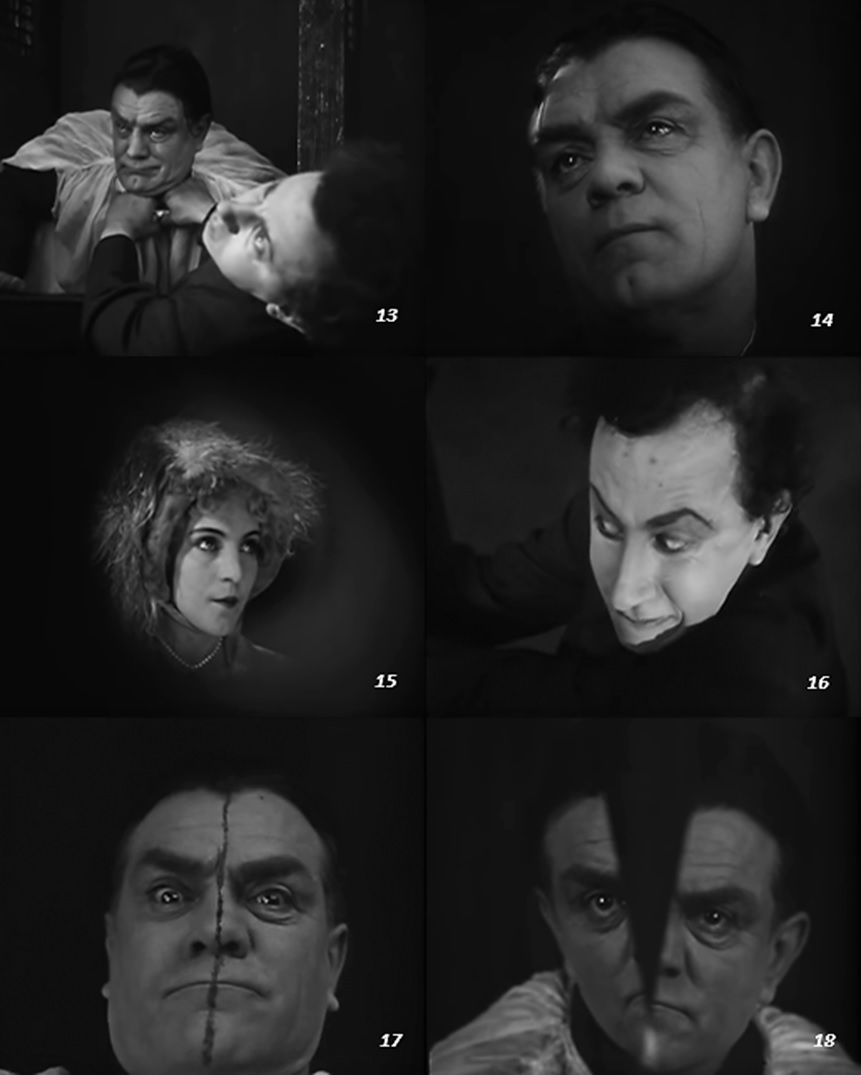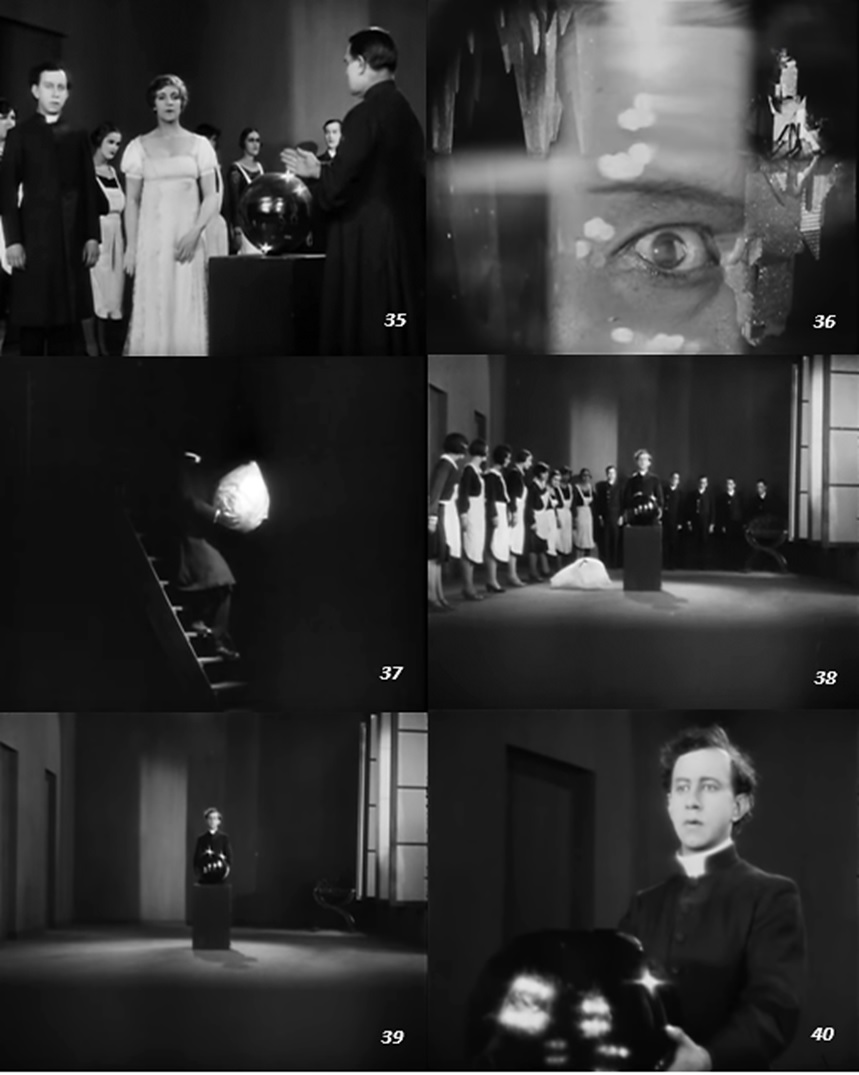![]()


![]()

■ While "The Seashell and the Clergyman" is categorized as a pioneering surrealist film or a pure film, if Artaud considered "The Seashell and the Clergyman" as a film reflecting his own thought, we can say that "The Seashell and the Clergyman" is the Metaphysical film. Of course, there is no such genre, but Artaud, who was obsessed with his own thinking and continued to believe that Metaphysical thinking was what enabled him to fight against the world even if he was alone and to destroy the pseudo-universal system of domination by the human spirit, regarded films as neither entertainment nor political statement, but Metaphysical objects.
■ Because of such a strong will to metaphysical thinking by Artaud, the film was able to have Intensity that could withstand philosophical interpretation, but most people cannot and will not think that far. This is not wrong in the individual nature of the film-viewing format, but beside the situation where the majority of the audience would pass over the inner essence of the film, the minor act of tracing Artaud's thoughts as one of the few people who brought metaphysicality to the film would not be a waste of time.
![]()

■ A pastor is attempting to compound a liquid pouring from a shell into a vial ( 1 ). A pile of crushed vials after the mixture fails ( 2 ). An officer suddenly appears and takes away the shells and breaks them ( 3~4 ). The pastor gets down on all fours on the street and starts to walk ( 5~6 ).

■ There is no explanation as to what this shell is, but it is impossible to interpret this work without thinking about it, as it reappears in the final scene. In Artaud's work, "Thought and Ego" are represented as "Crystallized Thing" or "Solidified Thing". In the moment of moving world through "the appearance of Thing of Body" before "the existence of Human being", the Solidified thing caused by the momentary chemical change that occurred coincidentally and concomitantly is what we call "Thought and Ego". For Artaud, it is what makes it possible to confront the domination of Body. In this sense, the repeated experiments of compounding by Pastor can be interpreted as the attempt to metaphysically pulverize and liquefy "Thing of Body" through the intermediation of Thoughts crystallized in the Seashell, and to reborn it as something else.
■ The pastor gazes at the woman the officer is with ( 7~9 ). However, this is not mutual act of gazing into each other's faces, but "Gaze itself" that is the mixture of sexual interest in the woman and metaphysical observation, as indicated by the blurring around the pastor's face and the emphasis on his eyes. The pastor runs to the officer entering the confessional ( 10 ). The pastor grabs the officer by the neck ( 11~12 ).

■ Then, surprisingly, a priestly uniform appears from under the military uniform ( 13 ). So the officer was actually a priest. What this means is that the priest, in order to marry a woman, disguised himself and his sexual desires by becoming an officer. Catholic priests are not allowed to marry in principle. In this point of view, the title of the film, "The Seashell and the clergyman," is well fitting phrase. The generic term "clergyman" is used to refer to sacerdotal category that includes both pastors and priests.
■ A priest and a woman looking at each other ( 14~15 ). The pastor continues to strangle the priest ( 16 ). Then, the priest's face cracks and breaks ( 17~18 ).

■ The pastor ( 19 ) is surprised to see the priest standing beside him. Here ( 18 ) we see that what appears from beneath the cracked face of the priest is the pastor's own sexual desire for Woman, similar to that of the priest. The pastor pushes the priest down the cliff as if to get rid of him ( 20~21 ). The pastor walks toward the woman and strips off her clothes, exposing her naked body ( 22~24 ).

■ However, the woman's breast is suddenly covered with a shell. The pastor removes it ( 25~26 ). Although the shell is the symbol of Thought, the pastor strips it off, which means that he has temporarily abandoned Thought, and as a result, he is disoriented by the appearance of distorted image of Woman ( 27~28 ). One must be careful not to fall into the often shortsighted interpretation that the pastor's repressed sexual desires are being expressed. Artaud's intention is not to expose repressed sexual desires, but to destroy "Things of human" by denying sexual desires because they are so human. But this is something one could not think only by watching the film, unless one has read Artaud's writings.

■ A glass ball placed in a room. The pastor walks backward and approaches the glass ball while beckoning to us ( 29~31 ). The maids begin to clean the room and polish the glass ball ( 32~33 ). Inside the glass ball is "Head" of the pastor ( 34 ). Here, the glass ball has become "Symbol of the ego", another Solidified Thing, standing alongside the shell, which is "Symbol of thought".

■ A scene of a pastor performing a wedding ceremony with a woman ( 35 ). At this point, the pastor is still trapped in his human sexual desires. However, in the next moment, the pastor realizes that the previous scenes are not real, but merely various imagery, imagery that he himself fantasized about, imagery that is too human ( 36 ). When he understands this, he dismembers his own head and carries it away, as if to destroy the system of physical control that makes Head the pseudo-apex of the human ego ( 37 ). Some may recall from here Georges Bataille's "headless man = acephal" ( *A ). The people disappear and the pastor is left alone ( 38~40 ).

■ The pastor drops glass ball and shatters it. His own face appears in the glass ball ( 41~42 ). The shell reappears in the pastor's hand. A intense "thought" that seeks to transcend things human drives the pastor toward "the deconstruction of the human ego" ( 43~46 ).

■ The pastor transcends "the Life of Human" by crushing and liquefying the ego and drinking it up. Artaud's metaphysical purpose is achieved in this last part ( 47-50 ).
( *A )
However, there are several differences here. By disabling the head, the symbol of the controlling function of the body, Artaud liberates Thought associated with the ego and turns them toward "Body" itself ( "Body" and the body are completely different ), destroying the controlling and organizational continuity of the body. And then, Artaud struggles against the body by limiting the body as something ( Body ) before the body, before life, something that cannot be born into the world ( in later years, this will be Body without organ ). Here is a solitary and purely metaphysical behavior.
In contrast, Bataille's headless man is only an ideological symbol for secret society of a few people. Although explanation is often attempted by Bataille and other members, it remains the symbol with mystical politics that ideologically strengthens the unity and essence of the association.
In Pierre Klossowski, who was also related to Acephar, "plural egos" return through deconstructing the transcendental and monotheistic ego by the event of God's death as described by Nietzsche ( e.g., "Baphomet ( 1965 )" ). Here, instead of the reigning ego, the plurality of egos is revealed, in which each ego's manifestation is selected according to its own intensity. This insight of Klosowski is close to Artaud's metaphysicality, but it is not as extreme as Artaud's in that the form of the ego is still preserved.
